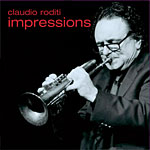Home » Jazz Articles » Live Review » Drifting and Tilting: The Music of Scott Walker at the B...
Drifting and Tilting: The Music of Scott Walker at the Barbican Theater, London
Barbican, London
November 13-15, 2008
There had been a buzz about this event ever since it was announced that there was to be a series of live performances featuring songs from Scott Walker's last two albums, Tilt (Drag City, 1995) and The Drift (4AD, 2006). The buzz quietened somewhat when it was announced that Walker himself would not be performing—no surprise, given his well-known aversion to performing in public; the anticipation intensified when it was announced that the singers would include Jarvis Cocker, Damon Albarn and—tantalizingly—"some surprises." Maybe the biggest surprise was that the event would not take place in the Barbican concert hall but in its theatre, to accommodate "the theatrical intensity of Walker's music"; besides the vocalists and Walker's band, the show would also feature a full orchestra plus dancers and puppeteers.
So, finally the build-up was over, and the show began its three-night run, playing to packed houses. Each night the program consisted of the same eight songs drawn from the two albums, six from The Drift and two from Tilt. The eight were "Cossacks Are," "Jesse," "Clara," "Patriot (A Single)," "Buzzers," "Jolson and Jones," "Cue" and "Farmer in the City." Cocker opened the show and Albarn closed it. In between, other vocals were provided by Gavin Friday, Owen Gilgooly, Nigel Richards, Dot Allison and Michael Henry. All did justice to the songs, whether attempting to replicate Walker's own trademark baritone or happy to sing their own way.
Mercifully, given the diversity of the songs' subject matter (including Elvis Presley's conversations with his stillborn twin, the execution of Mussolini and his mistress, and the Balkans war,) there was no attempt to link the songs together into a coherent narrative; this was no Mama Mia or We Will Rock You, thank God; the mind boggles at how convoluted the plotline would have been. Instead, each song was allowed to stand alone, with added visuals to enhance it. Walker has long admired such seminal, world renowned film directors as Bergman, Fellini, Pasolini, Kurosawa, Antonioni, Visconti and Cocteau, and his songs reveal an imagination that has internalized their stark imagery. The visuals that accompanied the show's songs revealed the debt too. For instance, Owen Gilhooly's performance of "Patriot," during which he cavorted half-dressed with a wind-blown newspaper, could have been plucked straight from a Fellini movie. The combination of live action, lighting, dance, puppetry, special effects, video and back projection left the audience with an unforgettable array of images burnt onto their retinas. Often, the visuals were as episodic as Walker's songs can be, with salient details lodging in the memory rather than the total meaning or narrative.
Along the way, there was abundant evidence of Walker's idiosyncratic approach to sound: during "Clara," a gutted pig's carcass was used as a punching bag to generate a unique percussive effect (familiar to anyone who has seen the fine documentary film Scott Walker: 30 Century Man, 2007); stage right, a percussionist played a cowbell inside a bucket, adjusting its position to get the sound just right; a lone flugelhorn player wandered the stage interjecting phrases at appropriate points; in the band, two percussionists struck large hollow metal blocks with concrete slabs to produce booming sounds appropriate to accompany the lyrics "Bam Bam" sung by Michael Henry in "Cue." As ever, the small details were all important.
At the end, the audience gave a standing ovation, many turning to the sound desk, behind which Walker himself was said to be at work. Sadly, he did not take a bow. Although this show was a collective triumph, Walker more than deserved to take his bow. More, please.
Tags
PREVIOUS / NEXT
Support All About Jazz
 All About Jazz has been a pillar of jazz since 1995, championing it as an art form and, more importantly, supporting the musicians who make it. Our enduring commitment has made "AAJ" one of the most culturally important websites of its kind, read by hundreds of thousands of fans, musicians and industry figures every month.
All About Jazz has been a pillar of jazz since 1995, championing it as an art form and, more importantly, supporting the musicians who make it. Our enduring commitment has made "AAJ" one of the most culturally important websites of its kind, read by hundreds of thousands of fans, musicians and industry figures every month.




















